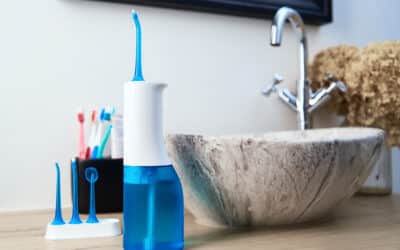Creating the perfect smile isn’t a one-person task. It takes a partnership between the patient and the orthodontist. At Ohana Orthodontics, you can depend on us to provide the braces and orthodontic expertise. We rely on you to keep your teeth and braces clean. Not brushing your teeth with braces can lead to staining or discoloration around the brackets.
So while your teeth will be straight, they won’t have the beauty you may expect without proper brushing and flossing. How bad can dirty braces be? Keep reading to learn about the effects of not brushing with braces — and how you can help your child remember!
What Are the Effects of Not Brushing With Braces?
Poor brushing with braces or not brushing with braces can lead to many issues, from tooth discoloration to tooth decay to gum disease. Brackets on the braces can trap plaque and food against the tooth. Plaque on unbrushed teeth or dirty braces can accumulate around the brackets. If the plaque and bacteria aren’t removed by brushing your braces, they could demineralize the enamel around the bracket. This will discolor the tooth by leaving white spots or creating cavities.
You may not be able to see all this with your braces, but you certainly will be able to see the effects of not brushing with braces once the braces are removed. You could have several white spots on your teeth, known as decalcification. You can also get cavities or gum disease. Sometimes, you can form cavities on unbrushed teeth while wearing braces. When that happens, you’ll need an orthodontic specialist to remove one or more brackets, repair the cavity, clean the tooth, reglue the brackets, and replace the wires. It can be a timely and costly procedure that can be avoided easily by simply brushing your teeth and bracing at least twice a day for two minutes at a time. Don’t forget to floss!
In addition to the damage to the teeth, not brushing with braces can damage your gums. Bacteria can build up around the gums and even get between the gums and teeth. Bacteria can damage the tissue holding your teeth in place, which may lead to serious issues like gingivitis or periodontal disease. While gingivitis is reversible, periodontal disease can lead to tooth loss or infection. That infection can spread and cause other health issues. Good oral hygiene is always vital, especially when you are wearing braces.
What About Poor Brushing With Braces?
While not brushing with braces is worse, poor brushing with braces isn’t much better. Not brushing long enough, not brushing often enough, or not being thorough can leave dirty braces and plaque to build up on your teeth. It’s super important to clean as much of the bracket and the tooth’s surface as possible. Otherwise, plaque can still build up, weaken your tooth’s enamel, and cause decalcification, tooth decay, and gum disease.
While unbrushed teeth may lead to visible damage early, poor teeth brushing may mean the damage will take longer to spot. You may not even see it until your braces are removed. Once the damage is done, it can be difficult to correct and get the smile you spent so long trying to achieve.
What Does Proper Brushing With Braces Look Like?
To take care of your teeth while in braces, you should brush your teeth at least twice a day with a soft-bristled toothbrush. Ideally, as long as you wear braces, you should try brushing after every meal. Be sure to brush for at least two minutes, covering each tooth’s entire surface. Make sure you get on and around each bracket and under the archwires of your braces.
Step 1: Floss first. With braces, flossing can be challenging, but several tools are designed to make it easier. If you still have difficulty, consider using a water flosser, which shoots a rapid stream of water between your teeth to floss. However, traditional floss is ideal for braces. You’ll also want to use an interdental brush between your braces to clean off any excess particles before brushing them away. Ask us if you need help figuring out the best way to floss with braces! We’re here to help.
Do White Spots Go Away After Braces?
Usually, patients don’t see the decalcification on their teeth until their braces are removed. Then, it becomes more visible. But what is decalcification, and will it go away once the braces are off?
Decalcification is when plaque, bacteria, and food acids draw minerals from the enamel, weakening it. Enamel itself isn’t purely white, like most people believe. It has a touch of yellow in it. The white spots on teeth are where the enamel has thinned to the point that the whiter material underneath shows through the enamel. In other words, decalcification or white spots indicate early tooth decay.
Unfortunately, we can’t regrow enamel. Damage to the enamel won’t go away, nor will the white spots on their own. It will take support from your dentist or orthodontist to bring a more natural look back to your teeth. Some methods are relatively straightforward, while others are both time-consuming and costly. It’s yet another reason why brushing with braces is so essential.
How Do You Fix Decalcification After Braces?
There are several ways to fix decalcification on teeth after not brushing with braces — some easier and more affordable than others. The complexity of the repair depends on how severely depleted your enamel has become.
Calcium Phosphate or Fluoride Treatment
If the damage is shallow, your dentist may be able to use a calcium phosphate or fluoride coating to mimic the enamel and return it to its original thickness. This will cause the white spots to fade. It will also form a seal to protect the tooth from further decay.
Microabrasion
If the white spots are widespread on the tooth, your dentist may use microabrasion to buff the tooth enamel to a more even tone, then seal the tooth with the minerals. This will even out the tone of the tooth.
Veneers
If neither of these methods will work, you may need veneers. These are usually made of porcelain or similar material and bonded to the teeth’ front, creating a more natural look. Veneers can take time to place because we must buff the tooth down first to make space for the veneer, which serves as the outer shell of your tooth. Veneers can last for years but will need to be replaced eventually, making this a more costly and time-consuming option.
Brushing With Braces For an Amazing Smile After Treatment
If you’re wearing braces, chances are you’re doing it to get the smile you’ve always dreamed of having. It would be hard to imagine going through all that time and effort only to discover damage to your teeth because of not brushing with your braces. That’s why we can’t stress the importance of maintaining good oral hygiene throughout your treatment enough. Remember to brush at least twice daily with a good, soft-bristled brush. Brush and floss between and around each bracket to ensure plaque doesn’t build up. Rinse your mouth after eating if you can’t brush. And don’t forget to keep up your regular dental cleanings during treatment and your regular orthodontist visits.
You will love your new smile when you partner with Ohana Orthodontics and commit to practicing good oral hygiene!









